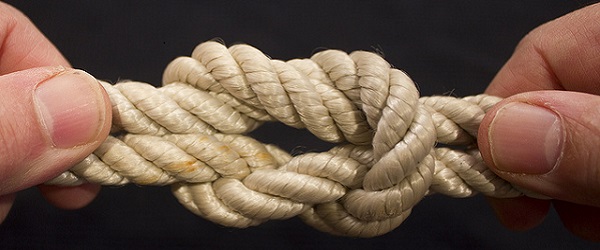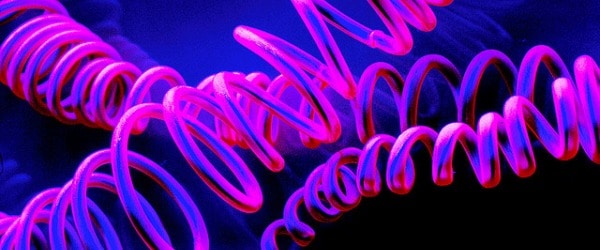After ligation, the method you use for desalting your sample prior to electroporation is critical, especially if your ligation is inefficient, according to a study by Schlaak et al [1].
Under standard electroporation conditions, the electric field of 12-18 kV/cm generated in a 0.1mm-gap electroporation cuvette means that the conductivity of the sample must be kept very low to prevent arcing. This means that any more than a very small amount of ligation mixture added to the competent cells will cause the sample to arc and the electroporation to fail.
So Schlaak et al looked at various methods of de-salting the DNA and compared how well the purified samples performed in electroporation. And their results were quite illuminating.
The experimental set-up was pretty simple. They took 1ng (high conc) or 3pg (low conc) intact pUC19 in 100ul of ligation reaction mix and desalted the samples using either ethanol precipitation, gel filtration, drop dialysis or a commercial microcolumn (the type used for gel extraction/PCR cleanup), resuspending in a final volume of 50ul.
Enjoying this article? Get hard-won lab wisdom like this delivered to your inbox 3x a week.

Join over 65,000 fellow researchers saving time, reducing stress, and seeing their experiments succeed. Unsubscribe anytime.
Next issue goes out tomorrow; don’t miss it.
Then the resulting sample was used to transform 50ul of electrocompetent E.coli and the number of resulting colonies counted. Each experiment was performed in triplicate.
The Results…
As the table shows, for the high concentration samples the microcolumns were the clear winner, although dialysis and gel filtration gave just a 2-fold lower efficiency.
But the difference was more marked with the low concentration samples. Again, the microcolumns were the best, but this time they were at least 100x more efficient than any of the other methods.
For some reason, ethanol precipitation, a widely used method of desalting DNA, gave miserable results for both samples. It’s not clear whether this effect only occurs in the hands of these authors, or whether using a carrier would have helped (they didn’t). But it is certainly worth noting.
The take home message
For desalting 1ng or 3pg of intact plasmid, commercial microcolumns gave superior transformation efficiencies compared with the other methods.
The effect was far more obvious with 3pg of plasmid, which is worth noting, because many of the ligations you do will have DNA concentrations in this range.
So maybe using microcolumns for desalting your ligation mixes could improve your results…
If you give it a try, let us know how it goes.
Reference
1. Schlaak et al Biotechnology Letters (2005) 27:1003-1005
You made it to the end—nice work! If you’re the kind of scientist who likes figuring things out without wasting half a day on trial and error, you’ll love our newsletter. Get 3 quick reads a week, packed with hard-won lab wisdom. Join FREE here.








